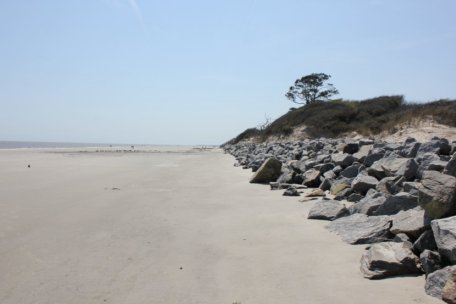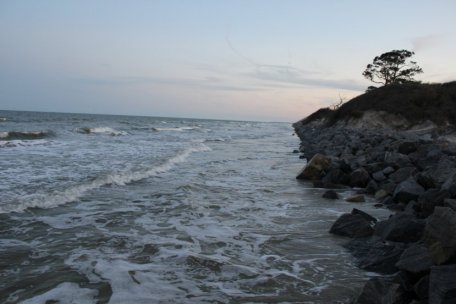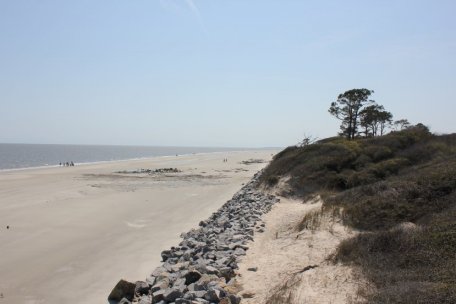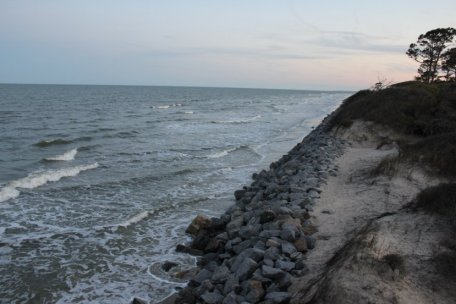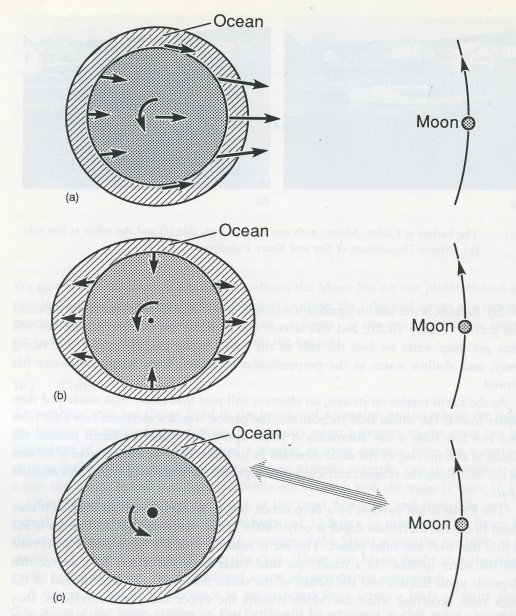 |
The Earth orbits the Sun and the Moon the Earth because of
the mutual gravitational attractions between the bodies. Ocean
tides are caused by the differences in the gravitational
pulls of the Moon and Sun across the body of the Earth (gravity dropping off with the
inverse square of distance). To the left, we look only at the
effect of the Moon. The depth of the
ocean and relative sizes of Earth and Moon are greatly exaggerated
(the Moon actually a quarter the size of Earth and 30 Earth
diameters away). At the top (a), the arrows symbolically show the
gravitational force between the Moon and Earth at different
distances from the Moon. At center (b), the central force is
subtracted from all the arrows. What remains is the differential
force, which causes the ocean waters to flow toward the line
between the Earth and Moon. As the Earth rotates, we therefore
pass under high water, then low, then high again, making the waters
rise and fall at the coasts. As a result of the Earth's rotation
and the time it takes the water to flow, the tidal bulge leads the
Moon (c). Because the Moon is moving counterclockwise around the
Earth with a period relative to the Sun of 29.5 days (the phase
period), high tides are separated not by 12 hours, but by an
average of 12 hours 24 minutes. Though the Sun is much farther away, it is also much
more massive, so it produces a tide as well, of about 45 percent
the strength of the lunar tide. The Sun thus contributes about a
third toward the total of the two when they line up to produce the
highest spring tides at new
and full Moons. At the lunar quarters, when the Moon and Sun
are at right angles to each other, the solar tide fills in the
lunar, resulting in much smaller neap tides. The height of
the tide is also influenced by the distances of the Earth from the
Moon and Sun, which change because of the eccentricity of the lunar
and terrestrial orbits. The strongest tide will generally occur
when new or full Moon coincides with lunar perigee, where the Moon
is typically 5.5 percent closer to the Earth than average. The
Moon and Sun pull back on the tidal bulge to slow the Earth's
rotation and increase the length of the day by about 0.0014 seconds
per century. The effect must be taken into account in timekeeping.
In reality, the situation is much more complex, involving shore
lines, the position of the Moon relative to the celestial equator,
the time of year, the latitude of the observer, and various other
factors. (Image and some text from The Ever-Changing Sky, J. B. Kaler,
Cambridge University Press, 1996, 2002.)
|
